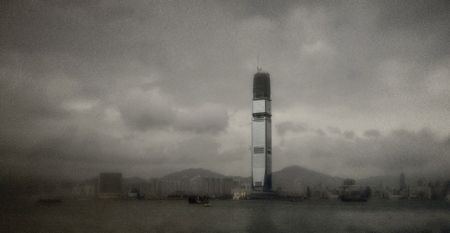
This blog originated as part of my classwork in pursuit of an MFA in Design Criticism at School of Visual Arts. I was among fifteen students in the program’s inaugural year, which culminated in a day-long event entitled Crossing the Line: the 2010 D-Crit Conference.
For all the chaos that a new program necessarily entails, I have to say the faculty (who include some of the most vital figures in design writing and research today, just look) and our class did an astounding job. D-Crit allowed me to develop research in diverse areas of interest, including architectural history, physical infrastructure, concepts and experience of space, the rhetoric of criticism, how technology shapes perception, unloved and forgotten graphic design, and alternative approaches to encountering the built environment.
On this last issue (and drawing on a number of the others as well), I developed my thesis around the contemporary practice of infiltrating and exploring abandoned spaces and infrastructure. Popularly known as urban exploration or urban archaeology, it is now a rather trendy phenomenon, spawning numerous online forums and Flickr pools. The activity is straightforward, but rich in potential meanings and implications about our relationship to urban space today. My research methodology included talking to a number of experienced urban explorer/archaeologists who are also very thoughtful about the practice.
Part of my premise was encapsulated by this short note scrawled in one of my notebooks: “Urban exploration is the kind of thing you do in the face of the heat death of your society.” But I also tied it back to aesthetic and philosophical ideas with their origins in the eighteenth century, primarily melancholy and the sublime. I was very encouraged by the contributions of urban explorers and photographers of sites of decay such as Jeremy Blakeslee, Bradley L. Garrett, Julia Solis, Troy Paiva, Geoffrey George, and Joe Reifer. More important, their support for many of my conclusions was a strong validation for my approach to the topic.
I will be posting more about this shortly, including excerpts from the thesis itself. But you can also see my ten-minute presentation on the subject followed by a short Q+A with Kurt Andersen here (as well as other presentations and lectures from D-Crit).


























 As mentioned here earlier, a longer analysis of Robert Sommer’s Personal Space: The Behavioral Basis of Design over at
As mentioned here earlier, a longer analysis of Robert Sommer’s Personal Space: The Behavioral Basis of Design over at 

 as jagged lines, as in the illo in the T/S post (from a
as jagged lines, as in the illo in the T/S post (from a 

